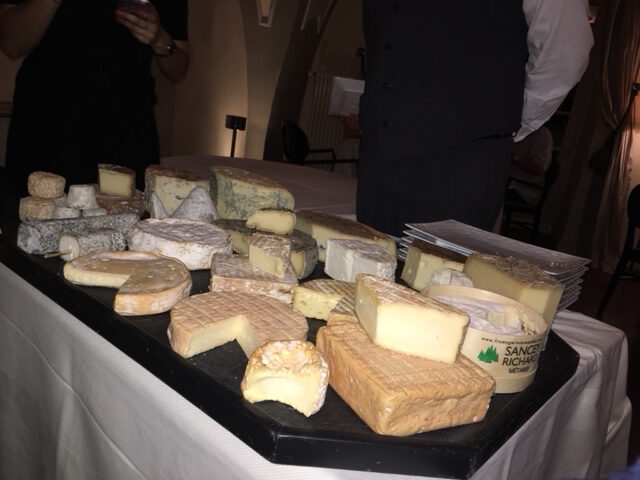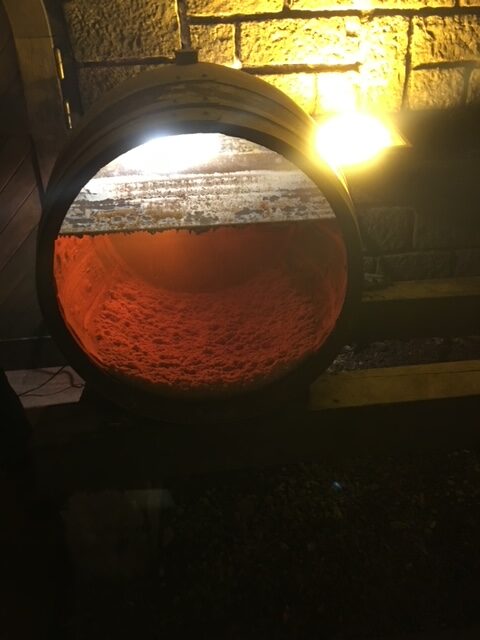
For a change of pace, I invited guest blogger John Bushee of Bristol, Rhode Island to talk about wine and cheese. John is my go-to guy on all things involving chocolate, cheese, and Jura. He has a Wine & Spirit Education Trust (“WSET”) Level 2 certification, owned a gourmet chocolate business, and has studied at the French Pastry School and with the Wine Scholar Guild in Jura. His day job is as a financial coach.
* * *
French idioms, like the French people, focus on food and, in this case, cheese. “Triste comme un repas sans fromage” (literally, sad like a meal without cheese) means to be very sad.
- An estimated 96% of French people eat cheese, half eating it daily. They have adopted some customs and pairing procedures with all their wine and cheese options, some of which we will share in this article.
- My favorite cheese is comptê. It is complex, made in the Jura region where France borders Switzerland and is subject to the same protections and classification standards as one expects of wine.
Jura is also home to some of France's winemaking mad scientists and Vin Jaune (yellow wine). If you are unfamiliar with Vin Jaune, you're in good company. It is made from the Savignin grape and is matured in a barrel under a veil of yeast, giving it some sherry-like qualities.

Pairing Vin Jaune from the Château-Chalon AOC with compté made from milk produced from the cows grazing on spring flowers is an unforgettable experience. Vin jaune is yellow in color and has flavors you'll enjoy because of the unique terroir.
- Ah, terroir! But why a wine word for cheese?
- Simple: terroir is derived from the French word “terre,” which means "earth." For wine descriptions, it is a word that references the distinct geological and environmental nature of where the grapes are grown.
- For compté cheese, the similarity is striking. Montbéliarde cattle graze on over 500 varieties of flowers, plants, and grass planted in the same soil as the grapes grown in the region. Jura has a mix of steep slopes that have limestone-based soil and flat land with clay. Marl, a combination of clay and limestone, is found throughout the region. Unique to the area is the high amount of fossils found when working the soil. This is a result of the geological upheavals that created steep slopes that add unique flavor characteristics to Jura's wines.
Wine and cheese don't need to be complicated and require travel to obscure regions of France. Some simple steps can provide a wonderful pairing experience. When it comes to cheese tastings, there are some simple rules.
- Like wine, cheese is sampled, beginning with the mildest and working your way to the strongest. As with wine tastings, the mild to more robust presentation keeps one's palate from being overwhelmed. Pair intense wines with cheeses of intense flavor.
- Pair cheese with wines from the same region. As with compté and Jura wines, you can enjoy cheese and wine pairings from your favorite regions.
- Bubbles go great with anything, particularly soft cheeses. Dry sparkling wines can really work well with creamy, dense cheeses.
- There are some cheeses known as "stinky cheese." While you may want to bring it home tied to the car's roof, pair it with a sweet or fortified wine. The sweetness will balance with the cheese for a great experience.
- Aged cheese (one year or longer) pairs well with bold red wines. The aging process reduces water content and intensifies the flavor, and the tannins in red wines balance well with the fats in cheeses.
- In France, cheese is not an appetizer. It's an integral part of the dining experience. Sometimes it is treated as a course in its own right. Traditionally, it is offered after the main course but before dessert. In some cases, it can be served in place of dessert.
- Cheese is a supplement to a good meal and a compliment to a bad one.
* * *
John can be reached at coachbushee@gmail.com.
Cheers!
